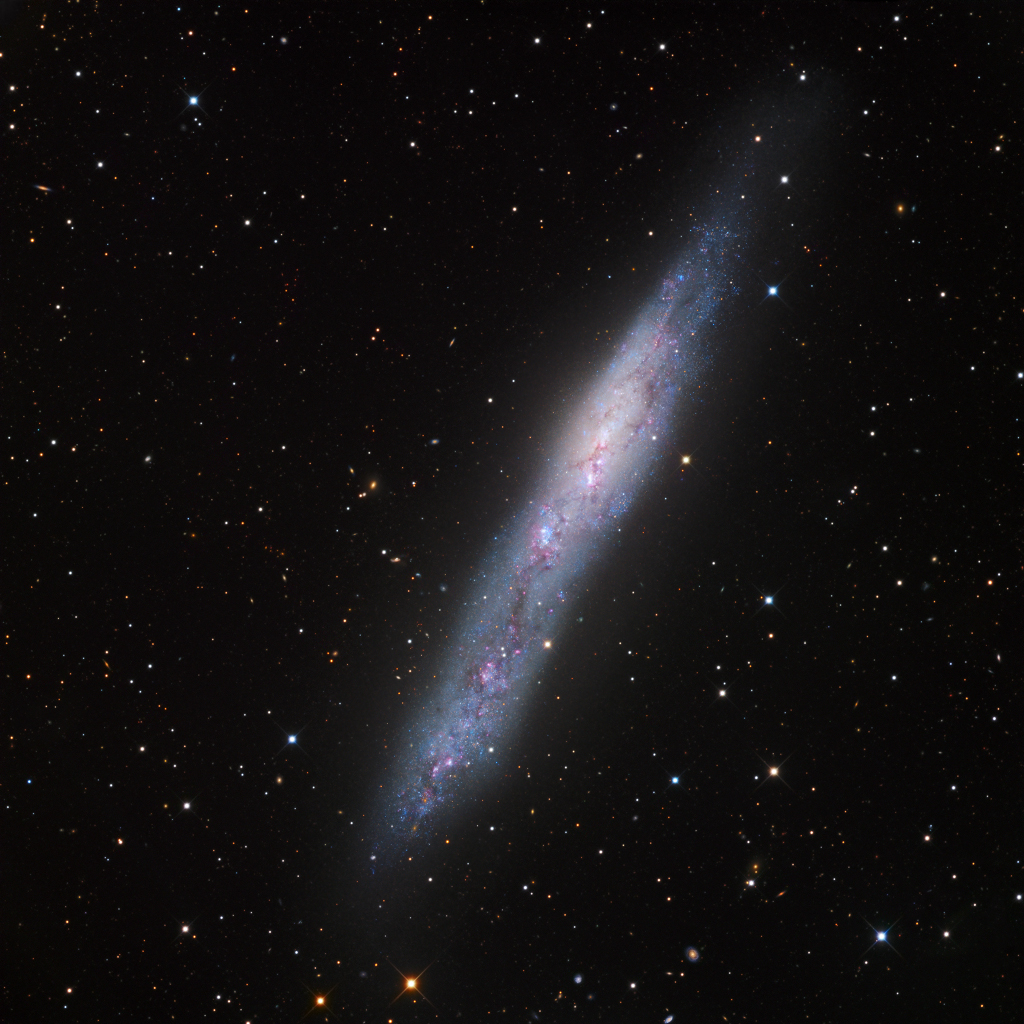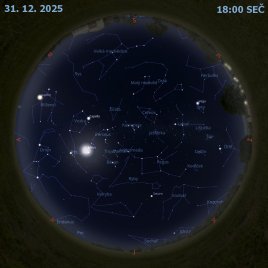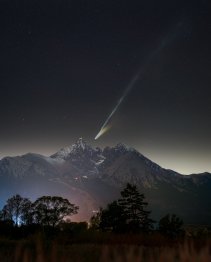Magelanovská galaxie NGC 55

Uznání a copyright: Acquisition - Eric Benson, Processing - Dietmar Hager
Nepravidelná galaxie NGC 55 se považuje za podobnou s Velkým Magelanovým mračnem (LMC). Ovšem zatímco LMC je ve vzdálenosti asi 180 000 světelných let a je dobře známou satelitní galaxií naší vlastní Mléčné dráhy, tak NGC 55 je více než 6 miliónů světelných let daleko a je členem Kupy galaxií v Sochaři. LMC samotná je klasifikována jako nepravidelná galaxie a na hloubkových expozicích připomíná galaxii s příčkou. NGC 55 měří asi 50 000 světelných let, je vidět téměř zboku a na rozdíl od zepředu viděné LMC ukazuje jen úzký profil. Stejně jako velké hvězdotvorné oblasti vytvářejí v LMC emisní mlhoviny, tak i v NGC 55 je vidět vznikat nové hvězdy. Vysoce podrobný galaktický portrét NGC 55 zvýrazňuje jasné jádro protkané mračny prachu, růžovými hvězdotvornými oblastmi a mladými modrými hvězdokupami.
Seznam odkazů v popisu
- APOD: 2018-05-16 Rotace Velkého Magellanova mračna
- KenCroswell.com: The First Cepheid Distance to NGC 55
- AtlasOfTheUniverse.com: The Sculptor Group
- Le.ac.uk: Irregular Galaxies
- APOD: 2008-04-09 Hloubkové pole Velkého Magellanova mračna
- APOD: 2008-04-26 Zóna Tarantule
- arXiv.org: The Disk and Extraplanar Regions of NGC 55
- Stargazer-Observatory.com: Sternenfotografie in Linz - Faszinierende Astro-Fotos, publikumsgerecht aufbereitet
NASA Official: Phillip Newman Specific rights apply. NASA Web Privacy Policy and Important Notices
A service of: ASD at NASA / GSFC & Michigan Tech. U.
Odkaz na originální APOD


